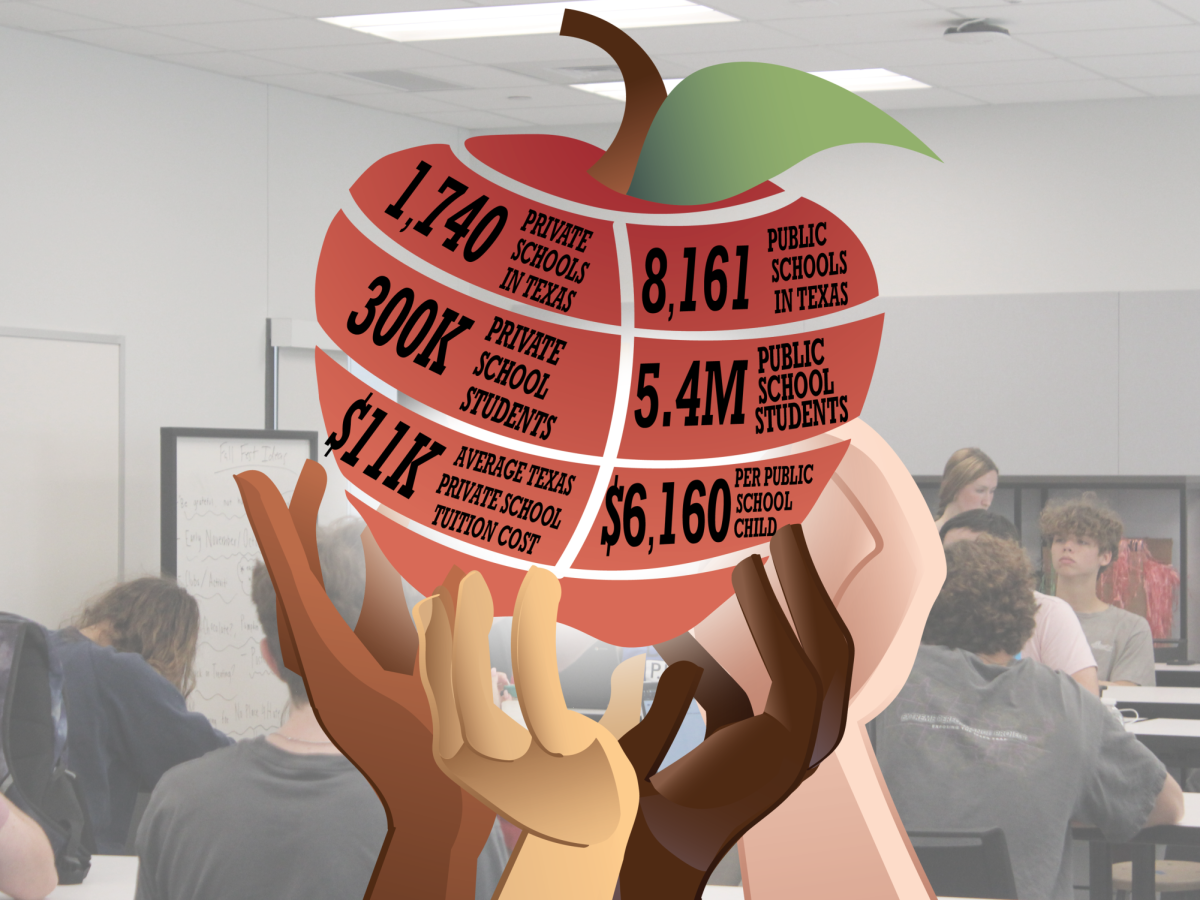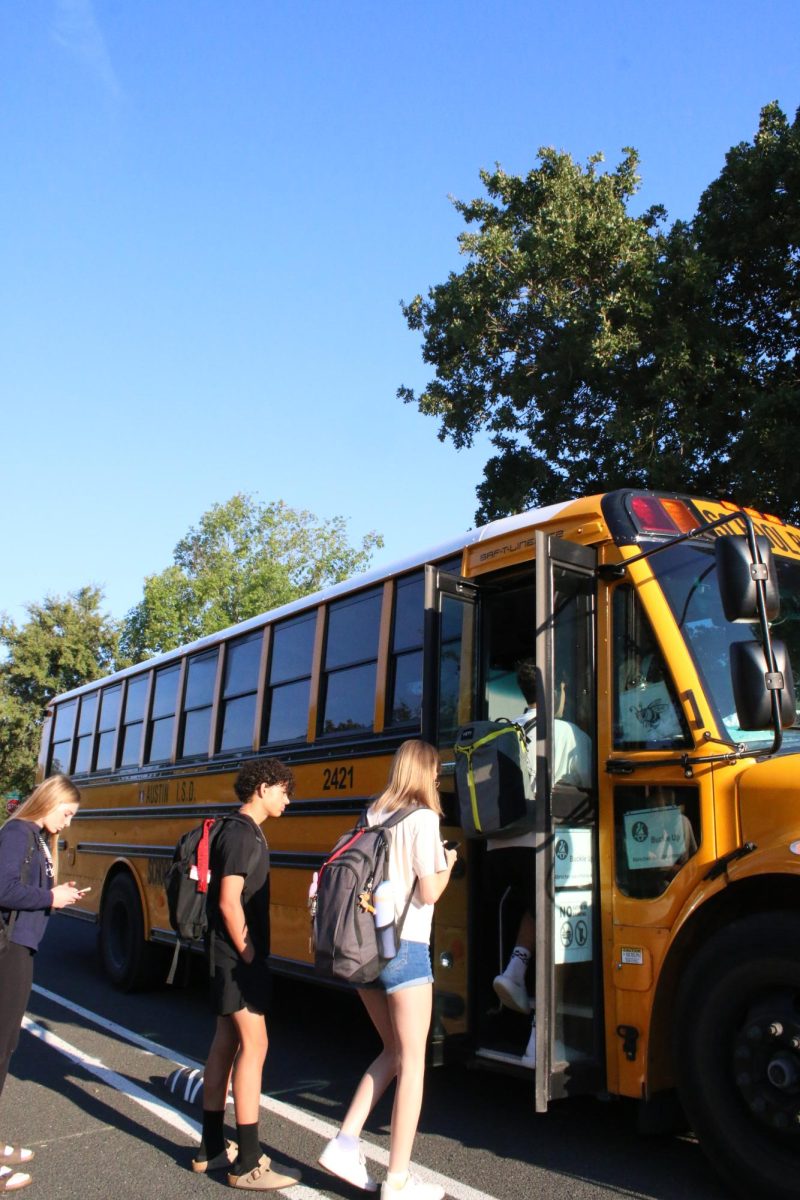What if there was a way to attend a prestigious private school, free of all expenses? As alarming as it may sound, this may be a possibility for Texas students, although it may still come at a cost.
Senate Bill 1 (S.B. 1) would allocate $8,000 to Texas families that are interested in moving their children from a public school to a private institution. This money would come in the form of vouchers, issued from S.B. 1, officially titled, ‘Empowering Parental Rights — Education Savings Accounts (ESA) for Texas Students.’
“Public schools are funded based on enrollment,” government teacher Dalton Pool said. “If vouchers pass, there could be a decline in public school enrollment and an increase in private school enrollment. As the student body population goes down, we receive less money to support teachers that are already employed, buildings that are already built, and infrastructure that is already put in place.”
The funding for these payments would be sourced from Texas taxpayer money that would alternatively be utilized in public schools.
“I can see the appeal of vouchers because I don’t think that Texas’ current education funding system functions well,” senior Kate Sur said. “Vouchers make private school facilities more accessible, but I can also see how it would defund public school resources.”
According to the Texas Tribune, the proposal would siphon $500 million away from public school campuses, where 5.4 million Texas students are taught daily. In comparison, only 300,000 students are enrolled in private schools in Texas, according to Ballotpedia.
“It’s frustrating to hear that people want to divert money from public schools,” senior Niam Patel said. “Lots of extracurricular activities at Bowie rely on those funds, and not having access to that can eliminate opportunities for students.”
As stated by the Texas School Coalition, the average amount of money given to public school districts for each student enrolled is $6,160. This value has not increased since the 2019-2020 school year, but Governor Abbott has offered to increase this amount, only if S.B. 1 is passed. According to Pool, this plan is disappointing.
“I believe Governor Abbott’s current proposal is increasing allotment by $5 billion; if we wanted to stay up to speed with inflation, Texas schools would need a total of about $14 billion,” Pool said. “So, his proposal is a drop in the bucket, compared to what we need when it comes to school funding. He will not offer an increase to school funding until vouchers are addressed, and in doing so, he is essentially holding school funding hostage, which is pretty sickening to me as a public school teacher.”
Governor Abbott declared a special session necessary to discuss school vouchers. Special sessions occur between the regular two-year legislative session, are much shorter, and can only be authorized by the governor. The first special session regarding ‘School Choice’ began on October 9, and S.B. 1 was approved by the Texas Senate. However, the Texas House of Representatives failed to vote before the end of the session, resulting in Abbott calling another special session on November 7.
“Rural Republicans are the ones that are holding out against vouchers. There aren’t a lot of private schools in rural areas, and usually, the places that employ the most people in these areas are public school districts,” Pool said. “So, Abbott may attempt to pressure rural Republicans to support his bill, possibly by threatening a lack of support in future Republican primaries.”
Websites like ‘Just Fund it TX,’ are resources that students can access to learn more about school funding and the implications of vouchers on their communities. Ethnic studies and English teacher Chrissy Hejny believes students should do their own research and decide whether or not to support or fight this bill.
“Students can go down to the capitol and give testimony for the public education committee,” Hejny said. “I began testifying when I was in college, and I’ve done it ever since. The more people who participate in politics, the better we’re represented. Students can email representatives, make phone calls, and, most importantly, vote.”
This is not the first time Texas Republicans have advocated for school vouchers. Texas established a voucher program in the 1950s to grant parents the opportunity to keep their children’s schools segregated if they were against public school integration.
“The private school movement started after schools were racially integrated,” Pool said. “A lot of private schools are populated by wealthy people

who don’t want their kids to go to school with other kids who look different or are from different socio-economic realities. So, a private school itself is a practice of segregation. Vouchers are a way to pit private schools against public schools, to steer more resources towards private schools.”
According to Private School Review, 59% of private schools in Texas are religiously affiliated. Because school vouchers will increase the likelihood of tax dollars going to a religious institution, Pool views Abbott’s proposition to be a violation of the Establishment Clause of the First Amendment, which outlaws government support of a dominant religion.
“The courts right now are split on whether or not this is a violation,” Pool said. “The Supreme Court would probably look past these school vouchers, but there are precedents in the past that prohibit government money from going to religious institutions, so we’ve seen both examples. What conservatives want is a court fight that will allow them to send state dollars to religious institutions.”
Provided that private schools remain tuition-based institutions and do not use state funds to operate, they are not required to follow the same guidelines or curriculum that public schools do. Examples of these self-regulated acts include a lack of standardized testing, religious teachings, and choosing not to enroll certain students based on admission’s personal ideals. According to Education Next, private schools can decide not to enroll students if they are of a certain race, religion, sex, economic class, or have a special education need.
“Not every kid is going to fit into every community,” Hejny said. “Different learners need different resources, and if a child needs an alternative learning space, they’re going to get that space through the public education system. We try to meet everyone’s needs, and when we’re properly funded, we can meet those needs. However, if the parents don’t like what’s taught in public schools, then it should be their responsibility to finance an alternative space.”
Hejny believes schools are fundamental to producing a successful society, but schools are unable to provide students with the necessary tools until they are properly funded.
“I’m a public school teacher, my children are public school students, and I care deeply about the public education system,” Hejny said. “It’s where all our kids are housed all day, every day, and it’s where our citizens are built. More children are going to go through the public school system than anywhere else, no matter how many vouchers Abbott tries to give out. When schools have what they need, and when kids are well-educated, well-fed, and well-treated, then we have a better, happier, and more prosperous society. That should be our goal.”






